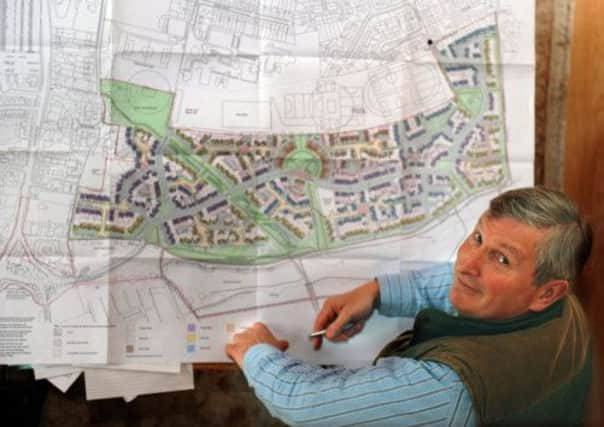Battlefield saga set for High Court


A bitter planning row spanning more than three decades has centred on the site earmarked for a 657-home project on the outskirts of York, which opponents maintain is the site of the Battle of Fulford in 1066.
English Heritage has admitted the land remains “the most likely candidate” for the clash between Viking invaders and English forces, which had a huge impact on the Battle of Hastings and William the Conqueror ultimately being crowned King of England.
Advertisement
Hide AdAdvertisement
Hide AdBut officials from English Heritage confirmed yesterday the land would not be added to the Register of Historic Battlefields, after conducting a review of an initial decision not to designate the site.
If the land had been added to the register, planning permission for the housing which was approved by the Government in 2007 following a public inquiry would have had to have been reviewed.
Members of the Fulford Battlefield Society, who are staunchly opposed to the housing scheme, have claimed the planning fight has been mired in misleading information presented by one of the UK’s biggest developers, York-based Persimmon Homes.
Historian Chas Jones, who formed the society, has launched legal proceedings against English Heritage for a judicial review to be held in the High Court in London amid accusations the planning system has been misled by flawed evidence.
Advertisement
Hide AdAdvertisement
Hide AdMr Jones is conducting a dig on land owned by Fulford Parish Council and has unearthed dozens of tiny fragments of iron which he believes could be from the weapons used in the battle.
He hopes to raise enough funds for far more extensive archaeological excavations to take place to uncover more evidence of the battle nearly 1,000 years ago.
“It is incomprehensible why those responsible for investigating and protecting our heritage have failed so badly,” he said. “It is scandalous that no relevant archaeology has been undertaken over the rest of the site and the many findings that point to the battle site have not been pursued.”
English Heritage admitted there has been “a great deal of debate” surrounding the Battle of Fulford, and a question mark still remains over its precise location.
Advertisement
Hide AdAdvertisement
Hide AdExtensive archaeological work has found evidence of Iron-Age, Romano-British and medieval activity, but nothing can be “securely identified” as coming from the battle, it said.
An English Heritage spokesman stressed it had “carefully considered” the request to review the decision not to designate the site, and referred the evidence to an independent panel of experts.
The spokesman added: “When asked to look at whether a site should be added to the Register of Historic Battlefields, we are guided by two fundamental criteria – historical significance and the ability to define a location.
“While Fulford was clearly a battle of sufficient historical significance, we stand by our original advice that although Germany Beck remains the most likely candidate for the site of the battle, on the basis of current documentary and archaeological evidence it is not possible to say the site has been securely identified.”
Advertisement
Hide AdAdvertisement
Hide AdThe national register already lists 43 battlefields including Stamford Bridge and Towton in North Yorkshire as well as Hastings in East Sussex, Bosworth Field in Leicestershire and Naseby in Northamptonshire.
Representatives from both York Council and Persimmon Homes stressed there is no conclusive proof to suggest the land was the location of the battle. Directors from Persimmon Homes were adamant English Heritage’s initial announcement in November not to designate the land on the battlefield register was “thorough, comprehensive and conclusive”.